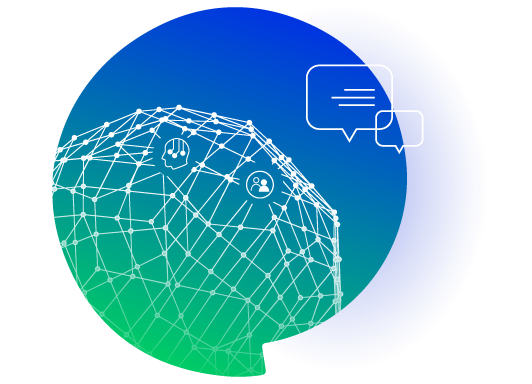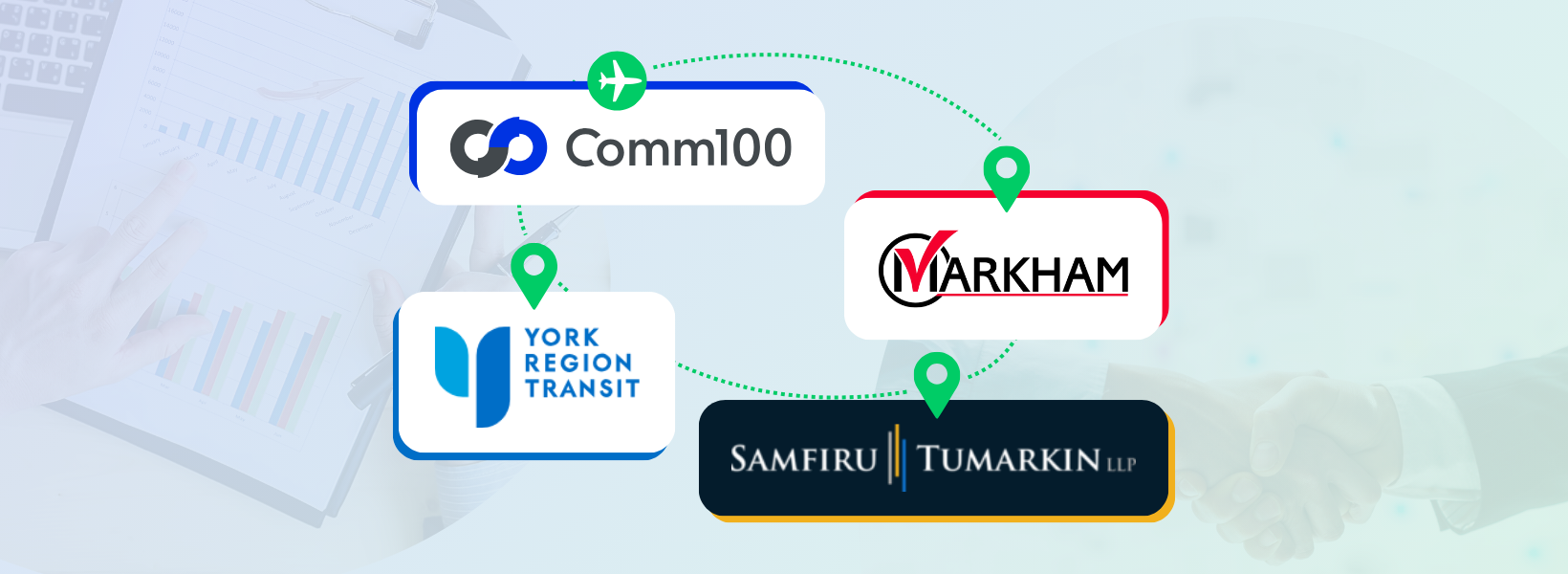Customers are the lifeblood of your business, so it makes sense that they should also be the motivating factor behind any major business decisions.
Adding a new customer communication channel can seem like great business sense, perhaps to embrace a new section of customers, or deflect from other channels. And customers themselves are more than ever demanding the ability to choose between channels, whether this be live chat, email, social media, or even SMS. But providing this level of omnichannel customer engagement in a truly customer-centric way takes more thought than taking a tech-first approach.
The age of digital transformation is upon us, and more customers are making the switch from phone support to digital support. While phone may have been the main tool (and maybe even the only tool) in your support department’s repertoire, using written communication channels is key when interacting with customers.
Providing customers with the information they need to understand the value of your business is most efficient when using written communication tools. Word choice, tone, and format can make or break the strength and appeal of your message. Unlike the phone, written communication channels allow you to share screens, send files, and solve more technical and complex problems faster – without the need to vocally spell out your email address three times. There is power in words, and thanks to new, emerging digital tools, expanding your customer communication channels to reach new audiences is simple.
But when considering adding a new digital customer communication channel, a company needs to carefully consider when, how, and why a group of customers would use a certain channel.
What are the demographics, psychographics, and firmographics of your audience? What are their preferred digital channels, and what queries do you usually receive during what stages of the customer’s lifecycle? If you’re expanding and trying to reach a new audience, what type of queries do you anticipate? These are all questions to keep top of mind when planning out your overall customer experience strategy. To help answer some of these questions, check out the 100 Essential Customer Service Statistics and Trends for 2020.
With any technology investment, it’s important to consider the ins and outs, as well as the feasibility of implementation.
In this blog post, we’ll break down top types of digital customer communication channels that make up a complete omnichannel approach, and explain some of the use cases for each that will answer these questions.
- Live Chat
- Ticketing
- Knowledge base
- Social media
- AI-powered chatbots
Live Chat
Live chat is an application hosted on your website that allows visitors to connect with live representatives on demand, getting answers to their queries instantly.
Why is live chat so central to modern customer engagement strategies? Well, what sets live chat apart from traditional support channels is the ability to engage customers in real-time, perfect for those telephone-phobic customers who want instant resolutions without needing to call.
According to a 2012 Aberdeen Group Report, companies that use live chat save up to 50% or more on support costs versus other methods. That’s not only because agents can handle multiple chats at the same time, but also because there are better opportunities for organisations to use interaction logs for continuous improvement purposes. It’s much easier to search for and correct service issues from text-based chat logs than it is to trawl through an impenetrable bank of voice interactions.
Not only can live chat reduce your operating costs, but it can also increase your top-line revenue. Live chat gives you new insights into browsing habits and customer personas that allow you to provide personalized interactions at key stages of the customer journey – so you can be there at just the right time and place to help them buy, or solve problems.
That’s why live chat, when implemented well, is a win-win for businesses, agents, and customers alike. Companies should be using live chat to provide a frictionless customer experience. By taking full advantage of live chat’s routing capabilities, integrations, and comprehensive reporting, businesses can increase efficiencies while decreasing support costs.
Ticketing
Ticketing is a platform that receives a service request from a user, typically via an online form or email, although it can also integrate with chat. The request is then turned into a “ticket” after submission for tracking and resolution via email.
Unlike chat, ticketing doesn’t rely on real-time, person to person communications. Having tickets automatically creates a ‘paper trail’ for complex queries so it’s easy to understand their histories and transfer them across agents.
Standard email platforms lack the workflow capabilities needed for case management within teams, and they often lack the ability to sort, filter, label, triage and prioritise queries. Having a dedicated platform for email-based customer support ensures queries can be managed much more efficiently, without the risk that queries will be overlooked or receive double replies.
While other channels like chat and knowledge base can instantly solve customer problems, we know for some customers, firing off an email is their preferred route to a response – and they’ll still be happy even if that response doesn’t arrive instantly.
Knowledge Base
As an organization grows, it becomes increasingly important to implement a Knowledge Management Strategy in order to manage information, data and knowledge for the benefit of internal and external stakeholders.
A knowledge base is central to this. It is a library of information about a service, product, topic or department that is designed to provide the kind self-serve help that customers now expect – when and where they want it.
The beauty of knowledge bases is that they’re always on and always there and require almost zero effort by the user. If users have a question, they can look it up on their own time and be on their way, without needing to escalate to anybody else.
Knowledge bases can be both external facing for customer use, or internal facing for use by employees.
External facing knowledge bases for customer use usually contain common FAQs and help guides. Many organisations see the same types of queries crop up time and time again, so by adding answers into a knowledge base organizations can free up their employees’ time, which is often better used in more complex and challenging scenarios.
Professional knowledge base software helps companies quickly build a dynamic FAQ system, with capabilities to empower customers to self-serve and optimise the use of the knowledge base over time, based on customer feedback.
Using a knowledge base for internal purposes give employees a centralized resource for information related to the company, which is great for both existing employees but also new hires trying to find their bearings.
Having an internal knowledge base is essential for staff training and support, by providing a go-to place for organisational knowledge. I believe that a great agent training strategy will always be baseless without a strong knowledge management strategy, facilitated through an internal knowledge base.
There’s no doubting the hold that social media now has as a customer engagement channel, especially for younger generations of customers.
According to a Microsoft report, 64% of millennials believe social media is an effective channel for customer service, as opposed to 27% of Baby Boomers. The same report found that about 52% of millennials actively use social media to resolve customer service issues, and 47% have used social media to complain about a brand’s service. These customers often view social media as more than just a way to get issues resolved – customers use social to “go public” with difficult or unsatisfactory service issues, encourage transparency, and as a measure to regain power and control over organisations.
But despite this, many organisations use social media as a “megaphone” for broadcasting marketing messages, while ignoring the need for a “microphone” approach to effectively handle queries from customers for whom social is a preferred channel, especially those in a younger demographic. That’s a serious issue, since not answering an issue on social decreases customer advocacy by as much as 50%.
Arguably, organisations wanting to operate in today’s competitive environment can’t afford to not be on social.
Chatbots
As a customer engagement channel, an AI Bot, more commonly known as a “chatbot”, harnesses the power of language, customer data, and context to deliver better customer self-serve experiences.
Today, digital conversations are the new currency. Chat is the preferred customer communication channel for prospects and customers. Chatbots are how businesses can make those conversations scale.
Chatbots are equipped with the power of advanced technology like Natural Language Processing (NLP), or Machine Learning. These technologies allow bots to “learn” just like a human would and exhibit “human-like” intelligence. Bots with brains can help customers and agents alike, from answering customer queries to executing manual tasks like data processing.
But putting chatbot on a website without training is like throwing a new employee off the deep end – it won’t be knowledgeable and could actually create negative customer experiences. Carefully considering context and use-case will help ensure that your chatbot is effective and that it meets business expectations every time. Companies adopting chatbots should have a complete and fully fleshed out deployment plan.
New possibilities through tying your digital customer communication channels together
While each of these digital channels are powerful on their own, integrating all these elements provides your agents with a 360-degree view into your customer base and opens up new possibilities for you to sell and serve more effectively. Here’s how all your digital customer communication channels can be powered-up through integration.
|
Live Chat |
Ticketing |
Knowledge Base |
Social Media |
AI Chatbot |
| Live Chat |
|
Chats referred to another department can be logged as tickets. Reps can pick up and respond to them from the ticketing system. |
KB is a self-serve option before connecting with a live chat agent. Internal-facing KBs help inform agent answers – using KB articles as canned message responses. |
Visitors can auto-fill pre-chat form information using social media accounts. |
Chatbots can provide 24/7 real-time chat support during off hours, and help agents find answers behind the scenes. Bots can both answer questions and process transactions. |
| Ticketing |
|
|
Knowledge base articles can be used as an agent support guide when completing a complex implementation or service request. Information from tickets can highlight KB knowledge gaps. |
Social media chats can be turned into tickets and tracked. |
Feedback from ticket requests can be used to “teach” a bot and make it more knowledgeable. Repetitive transactional requests like password resets can be automated. |
| Knowledge Base |
|
|
|
Allows agents to provide quick answers on social through KB articles. FAQs that come through social media can be turned into knowledge base articles. |
Knowledge bases can be used to train bot, so the bot becomes an interactive knowledge base. |
| Social Media |
|
|
|
|
Bots can handle chat requests coming in from social, providing 24/7 support. |
Wrap-up
We’re in an age where consumers have a lot of power. The move to digital has increased competition, and the “Amazon Effect” is real. This means that not only do customers compare the service they receive from you to the best out there, they’re also demanding that service providers be there on the channels that they choose.
Regardless of which customer communication channels you choose to suit your customer base, keeping up with customer expectations also means equipping your agents with tools and insights to support your customers better. There’s a bonus here – giving your agents the right tools to do their job increases satisfaction and engagement, an effect that both you and your customers will notice.
Download now: Customer Service Industry Trends 2024
Download this guide for free to learn more about these top customer service industry trends.
Download Now
Report







